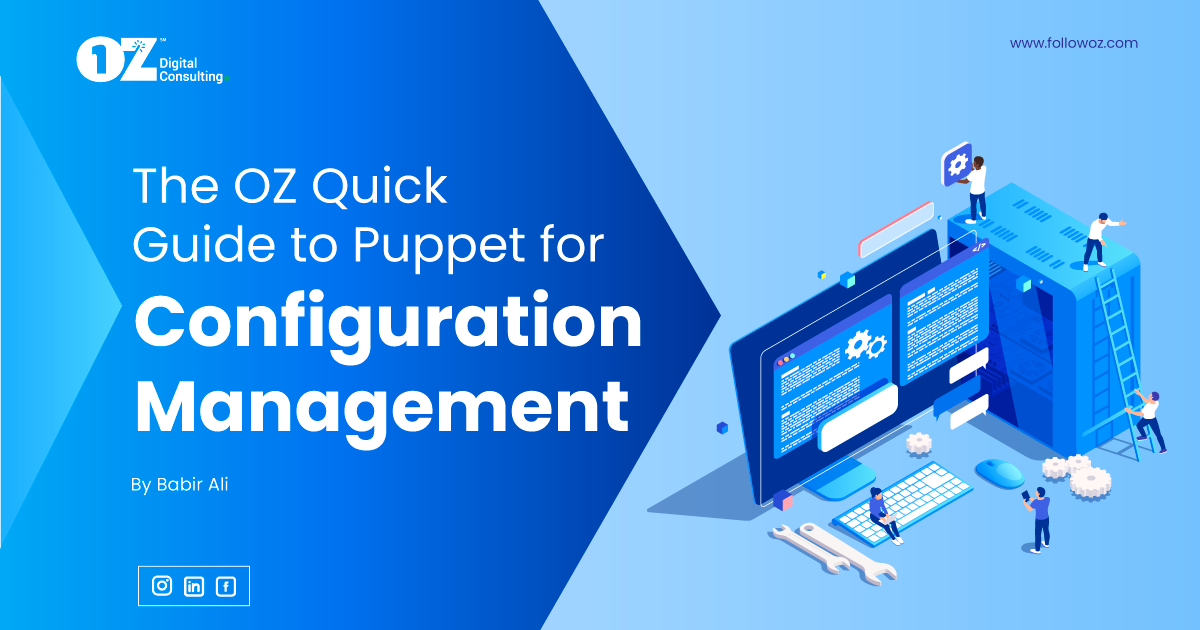By Babir Ali, Senior Consultant & DevOps Engineer
Configuration management tools provide a powerful way to automate and streamline the process, enabling system administrators and DevOps teams to maintain consistency, enforce policies, and reduce manual errors.
Puppet is one such popular configuration management tool: an open-source configuration management tool that allows you to define and manage the state of your infrastructure more effectively.
With Puppet, you describe the desired state of your systems in a domain-specific language called Puppet DSL (Domain-Specific Language) or by using a Ruby-based syntax.
Puppet then takes care of automatically configuring and managing your systems to match the desired state.
At the core of Puppet is a client-server architecture. The Puppet server acts as the central control node, while Puppet agents run on the managed systems, also known as nodes. The server distributes configuration instructions to the agents, which then apply those instructions to bring the systems into the desired state.
Puppet uses a master-slave communication model, where agents periodically check in with the server for updates and apply the changes accordingly.
But let’s go beyond the definition and dive into a detailed code example:
Suppose we have a web server that needs to have the Apache web server software installed and running. We want to define this configuration using Puppet.
What’s next?
- Install Puppet Server: First, install the Puppet server on a dedicated machine or use an existing server to act as the central control node. The Puppet server hosts the Puppet modules, which contain the code and resources needed to manage configurations.
- Define the Manifest: A Puppet manifest is a file that describes the desired state of your systems. Create a file named webserver.pp and define the following content:
# File: webserver.pp
# Install Apache package
package { ‘apache2’:
ensure => installed,
}
# Configure and enable Apache service
service { ‘apache2’:
ensure => running,
enable => true,
}
In this example, we’re using two Puppet resources: package and service. The package resource ensures that the Apache package is installed while the service resource ensures that the Apache service is running and enabled to start at boot.
- Sign Certificates and Run Puppet Agent: On the web server node, you need to sign the certificate request generated by the Puppet agent to establish trust between the agent and the server. Then, run the Puppet agent with the following command:
puppet agent -t
The agent will connect to the Puppet server, retrieve the configuration instructions defined in the manifest, and apply them to the system.
- Verify the Configuration: After the Puppet agent finishes applying the configuration, you can verify that Apache is installed and running correctly on the web server. You can access the web server’s URL in a web browser or use command-line tools like curl to check the response.
Conclusion
Puppet provides a powerful and flexible framework for automating infrastructure configuration management. With its declarative language, Puppet allows you to define the desired state of your systems, and it takes care of bringing them into that state automatically. The Puppet architecture enables centralized control and management of configurations across multiple nodes.
By leveraging Puppet’s capabilities, you can streamline your infrastructure management, improve consistency, and reduce manual effort in your IT operations.
Are you ready to take the first—or next best—step on your digital transformation journey? OZ experts will work side by side with you to fully leverage our relationships with the world’s leading technology companies so you can reap the benefits of best-in-class implementation, integration, and automation—making the most of your technology investments and powering next-gen innovation. Contact us today.




